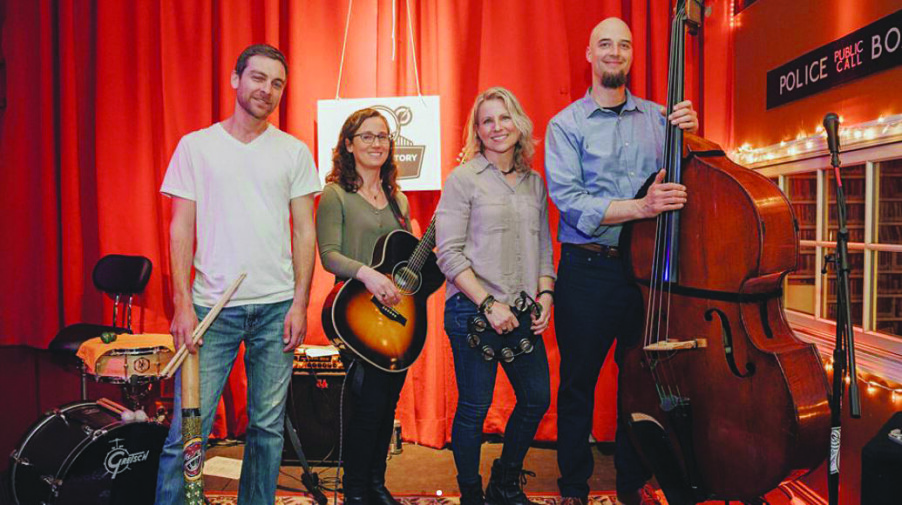Big Events March 10, 2022 and beyond
Thursday, March 10
Thursday means it’s Art After Work at the Currier Museum of Art (150 Ash St. in Manchester; currier.org, 669-6144), when, from 5 to 8 p.m, museum admission is free and you can view the art, listen to music (performing this week: River Sister) and check out the food and happy hour specials in the Winter Garden. This week’s special tours include “A Glitter of Green” at 6:30 p.m., when you can get ready for St. Patrick’s Day (next Thursday, March 17) by looking at the significance of green in three museum pieces, according to the website. Current museum exhibits include “Appeal of the Real: 19th Century Photographs of the Ancient World” and “WPA in NH: Philip Guston and Musa McKim.”
Friday, March 11
Majestic Theatre presents the comedy Nana’s Naughty Knickers tonight through Sunday, March 13, at the Majestic Studio Theatre (880 Page St. in Manchester; majestictheatre.net). The show runs Friday and Saturday at 7 p.m. and Sunday at 2 p.m. Tickets cost $20 for adults, $15 for seniors and 17 and under.
Friday, March 11
Oscar completists can add another movie to their “seen it” list: The Worst Person in the World (R, 2021), nominated for original screenplay and international feature film, starts screening today at Red River Theatres (11 S. Main St. in Concord; 224-4600, redrivertheatres.org). Red River is also still screening the nominated shorts packages: Catch documentaries on Thursday, March 10, at 6:15 p.m. Live-action shorts will screen Thursday, March 10, and Friday, March 11, at 3:15 p.m. and Saturday, March 12, at 11:30 a.m. And the animated shorts will screen Saturday, March 12, at 5 p.m.; Sunday, March 13, at 3:15 p.m. and Thursday, March 17, at 4 p.m.
Saturday, March 12
Get a taste of AC/DC with Dirty Deeds The AC/DC Experience at the Tupelo Music Hall (10 A St. in Derry; tupelomusichall.com, 437-5100) tonight at 8 p.m. Tickets are $35.
Sunday, March 13
The Milford Area Players production of the comedy The Philadelphia Storyfinishes its run today with a 2 p.m. show. Other shows this weekend are at 8 p.m. on Friday, March 11, and Saturday, March 12. The show runs at the Amato Center for the Arts (56 Mont Vernon St. in Milford). Tickets are $15 for adults and $10 for seniors. Visit milfordareaplayers.org.
Tuesday, March 15
Lil’ Buck brings “Memphis Jookin’ The Show” to the Capitol Center for the Arts’ Chubb Theatre (44 S. Main St. in Concord; ccanh.com) tonight at 7 p.m. The show is presented with free admission for four tickets for Concord-area residents by the William H. Gile Concert series according to the website, where you can see a video of Lil’ Buck’s dance moves.
Wednesday, March 16
It’s storytime at the New Hampshire Telephone Museum (1 Depot St. in Warner; nhtelephonemuseum.org, 456-2234) tonight when Miss Sue of the Pillsbury Free Library in Warner comes to read some of Gianni Rodari’s Telephone Tales at 3 p.m. Suggested donations are $5. Telephone Tales features stories within the story of a father who travels for work but calls his daughter every night to tell her stories.
Save the Date! Saturday, March 26, and Sunday, March 27
The Citizens Shamrock Half-Marathon, Relay and Shuffle will take place the last weekend of March in downtown Manchester. Sunday, March 27, is also the day of the Manchester St. Patrick’s Parade, for which the shamrocks have already been painted on Elm Street, according to saintpatsnh.com. As for the races, the half-marathon and relay take place on March 26 and the Shuffle and an 8-and-under Lil Leprechaun Run take place on March 27. There are also virtual options. See millenniumrunning.com/shamrock.
Featured photo. River Sister. Courtesy photo.





